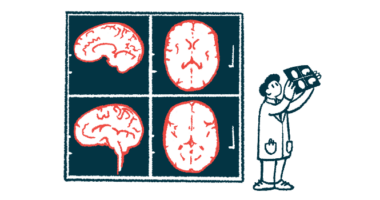Wearable technology, smartphones may aid Parkinson’s research
Devices can be used to track symptoms, assess changes, study shows

Remote assessments using smartphones and smartwatches could be used to detect and monitor changes in the early stages of Parkinson’s disease, according to findings from the WATCH-PD study.
Over the course of one-year of follow-up, an Apple Watch paired with an iPhone was able to detect declines in gait and increase in tremors in early-stage patients.
“Digital measures hold the promise to provide objective, sensitive, real-world measures of disease progression in Parkinson’s disease,” Jamie Adams, MD, an associate professor of neurology at the University of Rochester Medical Center, and the study’s lead researcher, said in a university press release. “This study shows that data generated by smartwatches and smartphones can remotely monitor and detect changes in multiple domains of the disease. These digital assessments could help evaluate the efficacy of future therapies.”
The study, “Using a smartwatch and smartphone to assess early Parkinson’s disease in the WATCH-PD study over 12 months,” was published in njp Parkinson’s Disease.
Wearable technologies are offering a new way to monitor motor symptoms in Parkinson’s disease patients. While symptoms used to only be assessed in the clinic, wearable technologies allow for continuous, at-home monitoring of things like changes in gait and tremor. Smartwatches may even help identify people at risk for Parkinson’s years before their symptoms become evident. And finger tapping and voice recording can help detect early signs of speech impairment, a little known feature of the disease.
Data from the observational WATCH-PD study show that remote assessments of motor and nonmotor features using smartphones and smartwatches could be used in clinical trials to track the severity of Parkinson’s disease.
The study enrolled 82 early-stage, untreated patients (mean age, 63.3) and 50 aged-matched (mean age, 60.2 years) people without the disease who served as controls at more than a dozen sites across the U.S.
Monitoring Parkinson’s symptoms remotely, digitally
Here, researchers at the University of Rochester Medical Center, in New York, along with members of the Parkinson’s collaborative group Critical Path for Parkinson’s Consortium 3DT Initiative report the feasibility of digitally monitoring Parkinson’s manifestations over a year. Smartphone assessments were conducted at each clinic visit and at home every two weeks, with results showing patients saw significant declines in measures of gait, as assessed by arm swing, along with the number of daily steps. An increase in tremor and modest changes in speech were also reported.
For example, smartwatch assessments of arm swing in the clinic fell from a mean of 25.9 degrees to 19.9 degrees. At the beginning of the study, Parkinson’s patients walked significantly less than controls — a mean of 238 versus 362 steps an hour.
The proportion of patients having tremor while awake at home significantly increased from 19.3% at the study’s start to 25.6%, supporting the use of smartwatches as a “promising measure for assessing the efficacy of therapies aimed at reducing tremor,” the researchers wrote.
Digital speech composite scores, which are designed to capture changes in speech and language over time, assessed at home changed significantly after 12 months in patients, while no change was seen in healthy controls. The smartphone also detected speech changes even when clinicians didn’t notice any. The findings support using at-home speech monitoring to differentiate Parkinson’s patients from healthy controls, said the researchers.
WATCH-PD will continue to follow patients for 18 more months, an extension supported by the Michael J. Fox Foundation.
“On behalf of Critical Path Institute, we are delighted to see the astounding progress of this unique project,” said Diane Stephenson, PhD, executive director of Critical Path for Parkinson’s consortium and a co-author of the study. “The early and often feedback from regulators have shaped this study in ways that now can link the clinical meaningfulness of symptoms measured by digital health technologies to the voice of people with lived experience. By partnering with patients, regulators, industry, and academic experts this project is serving as a precedent for other disease areas to follow. ”







